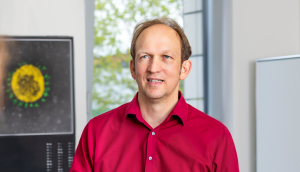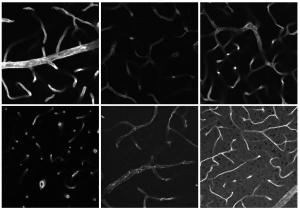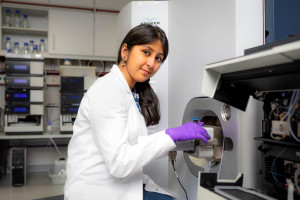Dortmund, 14th June 2022

Prof Dr Matthias Gunzer heads the department of Biospectroscopy at ISAS and is Director of the Institute for Experimental Immunology and Imaging/Imaging Centre at Essen University Hospital.
© ISAS
Answer by Prof Dr Matthias Gunzer:
"First of all, one has to say that we in the western world are very lucky to only have to speak of HIV, the human immunodeficiency virus, and not of AIDS. The reason for this is our access to excellent medical care with so-called highly active antiretroviral therapies (HAART). These medications ensure that HIV-positive patients do not develop acquired immunodeficiency syndrome (AIDS). Unfortunately, the situation for those affected by HIV in other countries, such as in large parts of Africa, is worse. That is why we definetely need a vaccine in order to protect them from HIV.
Vaccination is the process of confronting the body with specific antigens; in the case of viral diseases such as COVID-19 or AIDS, these are components of the virus that causes the disease. The aim is for our body to produce antibodies and defence cells against the antigens. The result of a successful vaccination is then a protective immune response that can last for months or years.
Scientists have been researching HIV vaccines for decades. But of more than 400 clinical studies on possible vaccines that have taken place since 1987, none has been convincing in terms of the final result. However, this is by no means because too little research is being done on HIV. We can clearly see this in the successful treatment options that now exist, such as HAART. We should not forget that many years of research on HIV have also led to the fact that we now know a great deal about how antibodies work, for example – or about how to induce them particularly efficiently with a vaccine.
Compared to the coronavirus, however, the HI virus is incredibly variable: tens of thousands of new copies are created every day - in a single person. On average, each of these new copies carries at least one unique mutation. Therefore, over the years, a single person carries countless variants in their body, but only a few of these variants can be transmitted to others. The main problem that these variants pose for vaccines is that some mutations are located precisely in the parts of the virus that are usually attacked by the immune system. Therefore, mutations like these can help the virus remain unrecognised. A successful vaccine needs to elicit an immune response that can deal with this diversity in order to provide full protection against an infection.
In addition, unlike SARS-CoV-2, the HI virus is a true concealment artist. Parts of its surface are covered with a dense layer of sugar molecules - the glycan shield. This shield covers possible points of attack for antibodies. Although the coronavirus has such a sugar layer as well, the crucial areas of its spike protein remain uncovered. Thus, in the case of SARS-CoV-2, antibodies can recognise its spike protein and bind to it, thus neutralising the virus. The second hiding tactic that the HI virus uses is also tricky: the HI virus inserts its genetic blueprint into the DNA of its host, i.e. humans, and thus creates a hidden reservoir in the immune cells. This makes the HI viruses invisible to the immune system.
At present, six phase III trials are being conducted to investigate the efficacy and safety of potential HIV vaccines in large patient populations. Among the vaccine candidates are new variants such as those designed to elicit broadly neutralising antibodies and several based on mRNA molecules. Many people are already familiar with the latter because of the highly effective vaccines against COVID-19. That said, the research on HIV is ongoing - which is why, despite the challenges, we should by no means give up hope for an HIV vaccine."
(June 14, 2022)








